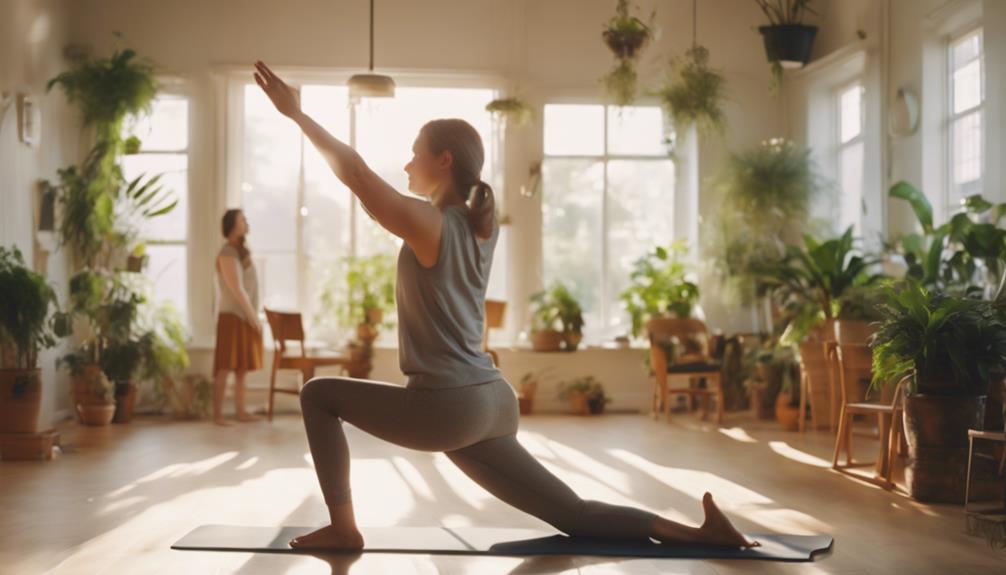Yoga Matt

“`markdown
The Ultimate Guide to Choosing the Perfect Yoga Mat
Yoga has become a staple for many fitness enthusiasts and wellness seekers alike, and having the right tools can make a significant difference in your practice. One essential item every yogi needs is a quality yoga mat. In this guide, we will explore the various factors to consider when choosing the ideal yoga mat, ensuring you find one that meets your specific needs and enhances your practice.
Understanding the Importance of a Quality Yoga Mat
A yoga mat is more than just a piece of equipment; it serves as your personal space during practice, providing comfort, stability, and support. A quality yoga mat can significantly enhance your experience, allowing you to focus on your poses without distractions. The right mat will also offer adequate grip to prevent slipping during poses, which is crucial for maintaining alignment and avoiding injuries. Investing in a good yoga mat is an investment in your health and well-being.
Materials Matter: Choosing the Right Yoga Mat
Yoga mats come in various materials, each offering different benefits. The most common materials include PVC, TPE, natural rubber, and jute. PVC mats are popular for their durability and affordability, making them suitable for beginners. TPE mats are eco-friendly and offer excellent cushioning. Natural rubber mats provide superior grip and are ideal for those who practice frequently, while jute mats offer a unique texture and are also eco-friendly. Understanding the properties of these materials will help you select a yoga mat that aligns with your values and preferences.
Related Posts:
Thickness and Cushioning: What You Need to Know
The thickness of a yoga mat can greatly influence your comfort during practice. Standard yoga mats are typically 1/8 inch thick, but they can range from 1/16 inch to over 1/4 inch. Thicker mats provide more cushioning, which is beneficial for practitioners with sensitive joints or those who practice on hard surfaces. However, thicker mats can also make it more challenging to maintain balance in certain poses. Consider your practice style and personal comfort when selecting the thickness of your yoga mat.
Texture and Grip: Essential Features for Your Yoga Mat
Another crucial aspect of a yoga mat is its texture and grip. A mat with a textured surface can help prevent slipping, allowing you to hold your poses confidently. Look for mats that feature raised patterns or a sticky surface, as these can provide the traction needed for dynamic movements. If you sweat a lot during your practice, consider investing in a mat specifically designed to offer extra grip when wet. This can enhance your practice and help you focus on your flow without worrying about slipping.
Size and Portability: Finding the Right Fit for You
Yoga mats come in various sizes, and selecting the right one is essential for your practice. Standard mats are typically 68 inches long and 24 inches wide, but taller individuals may require longer mats. Additionally, if you plan to travel frequently with your yoga mat, consider its weight and portability. Lightweight mats are easier to carry, while those that can be easily folded or rolled up are more convenient for on-the-go yogis. Always check the dimensions of the mat before making a purchase to ensure it suits your needs.
Eco-Friendly Options: Sustainable Yoga Mats
With the increasing awareness of environmental issues, many yogis are seeking eco-friendly yoga mat options. Look for mats made from sustainable materials such as natural rubber, jute, or recycled materials. These mats are not only better for the planet but often provide excellent performance as well. Brands committed to sustainability often use non-toxic production processes, ensuring that your yoga practice is as gentle on the Earth as it is on your body. Choosing an eco-friendly yoga mat is a step towards a more sustainable lifestyle.
Budget Considerations: Investing Wisely in Your Yoga Mat
When it comes to purchasing a yoga mat, your budget is an important consideration. While it may be tempting to opt for the cheapest option, keep in mind that a high-quality yoga mat can enhance your practice and last for years. Expect to pay anywhere from $20 to over $100 for a quality mat, depending on the material and brand. It’s essential to balance cost with quality—investing in a durable mat can save you money in the long run, as it won’t need to be replaced as frequently.
Maintaining Your Yoga Mat: Tips for Longevity
Once you’ve chosen the perfect yoga mat, it’s essential to take care of it to ensure its longevity. Regular cleaning is crucial, especially if you practice frequently. Most mats can be wiped down with a damp cloth and mild detergent, but always check the manufacturer’s instructions for specific care guidelines. Additionally, avoid leaving your mat in direct sunlight for extended periods, as this can cause fading and deterioration. Proper care will keep your mat in excellent condition, allowing you to enjoy its benefits for many practices to come.
Conclusion: The Right Yoga Mat Can Transform Your Practice
Choosing the right yoga mat is a personal journey that can significantly impact your practice. By considering factors such as materials, thickness, grip, size, and eco-friendliness, you can find a mat that suits your individual needs and enhances your experience. Whether you’re a beginner or an experienced yogi, investing in a quality yoga mat is a step towards a more fulfilling and enjoyable practice. Remember, the right mat can transform your yoga sessions, making each practice a step closer to your wellness goals.
“`
This blog post is structured to be SEO-friendly, using variations of the keyword “yoga mat,” related terms, and engaging content that maintains readability and provides valuable insights for readers.What Is Baptiste Power YogaYoga SanctuaryMommy And Me Yoga